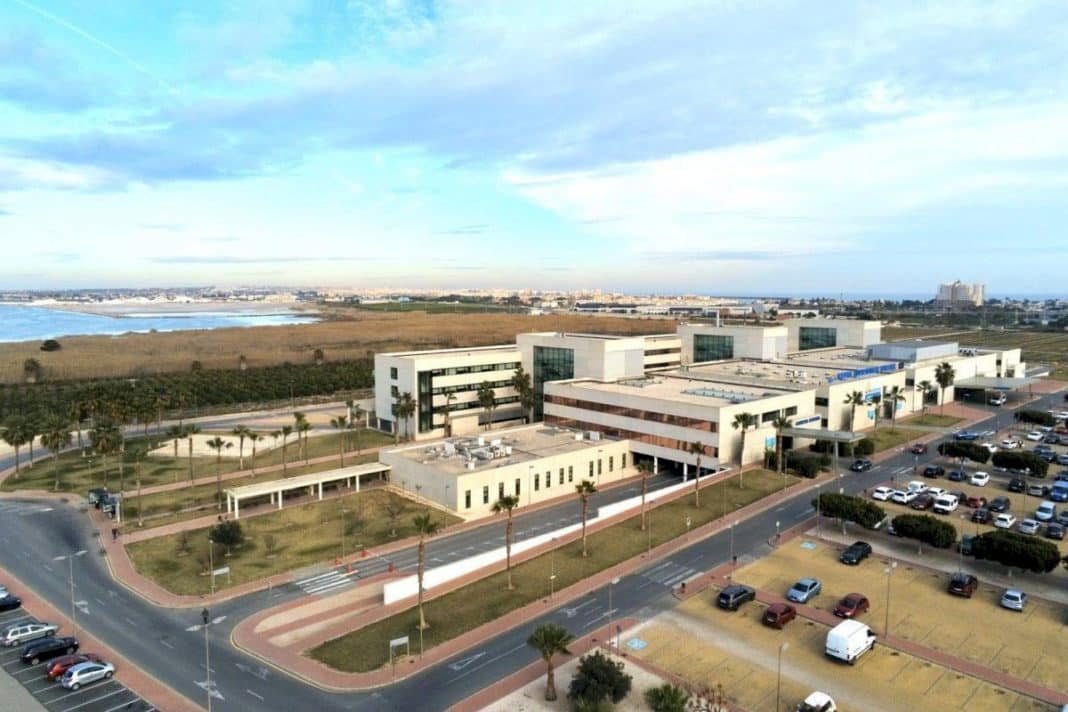Ribera Salud, the private management company that has successfully operated Torrevieja Hospital, says goodbye after 15 years of success, to the uncertain relief of the Valencian Department of Health. However it also leaves the hospital, that it once said was the best in Spain, in a condition that is a long way from that situation.
Tons of obsolete material – printers, computers and hospital furniture, have all been sold by weight as scrap metal; the unions – previously defenders of the public-private model as a guarantee of stability- claim that Torrevieja University Hospital is being left in “a state that, at the very best, is disappointing.”
This is the image of the last few “unpleasant” weeks for Ribera Salud, that it leaves behind after 15 years of health management in Torrevieja, and nine more years across much of the Vega Baja.
The centre that was adopted by Microsoft in 2010 for the installation of a World Centre of healthcare innovation, which was admired within the money-spinning industry of health tourism, and in whose main hall there are no more awards nominating it as the best hospital in Spain, is now in a depressing condition.
The Hospital, opened by Francisco Camps on 17 October, 2006 was ‘a long-time’ aspiration of the people of Torrevieja and La Vega Baja, as well as the municipalities that were later integrated into the department of health: Pilar de la Horadada, Rojales, Guardamar del Segura, Orihuela Costa, San Fulgencio, San Miguel de Salinas, Los Montesinos, Benijófar and Formentera del Segura.
For more than 20 years previously, the residents of the coastal region had to go to the Hospital Vega Baja for any emergency or treatment. Travelling a minimum distance of 15 kilometres, but often many more, it is not surprising that any survey commissioned by Ribera on the levels of care at the Torrevieja Hospital always showed an enormous level of satisfaction, certainly to it’s proximity.
Since it was first opened the hospital has always been the jewel in the Ribera Salud crown. 62 million euros was invested in its construction. It didn’t matter that it was built on a salt marsh and that it generated controversy amongst many left wing politicians.
The main argument of the concessionaire and the PP government at the time, champion of the management formula, was that it does not matter if the management is public or private as long as it is not distinguished in the care that patients receive. The formula has subsequently been a reference in the health sector.
The projected population -160,000 residents, according to Ribera- never questioned this model, and neither did the unions, which negotiated, year after year, much improved agreements for the staff.
The labour relations of the 1,400 workforce have always been agreeable, a happy arcadia that the concessionaire has always prioritised. Everything has worked with 100% public funding. More than 120 million euros per year has been allocated by the Generalitat, based on the per capita estimate, which has risen from 494 at the beginning of the concession to 795 euros per year, for each of the health cards assigned to the service over the last fifteen years.
And also in that time the concessionaire was able to build an extensive accreditation network, capture more users, more income for the concession, to which was added the medical attention paid to visitors: many thousands of euros charged to the health services of other autonomies and countries.
Ribera, which belongs to the North American health multinational Centene, has had more scope than public health to attract more qualified personnel, specialty physicians, through a system of incentives and remuneration, which attracted many of the doctors that are now going to leave the hospital.
This has made it possible to develop, without many of the constraints of the public administration, programs in which they reduced waiting lists for surgery by operating in the afternoons.
If there is something that Ribera has championed in the health area, it has been first class quality of care: pristine facilities, individual hospitalisation rooms with a bed for a relative, the mobile information system and many other applications and services created exclusively for the care of community residents and thousands of other users.





